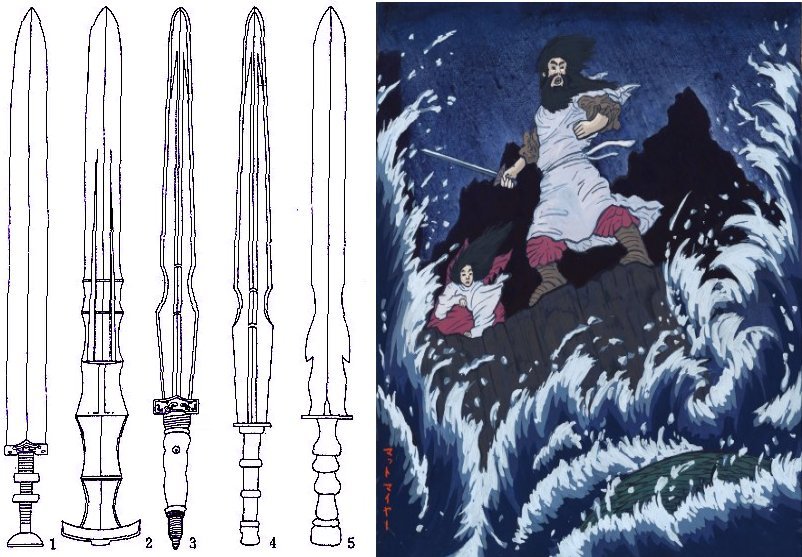Sacred Regalia Of Japanese Emperor: Sword, Mirror And Jewel In Ancient Japanese Tradition
A. Sutherland - AncientPages.com - Many important symbols can be found in Japanese people's early cultural beliefs, religious tradition and imperial myths.
The country’s most sacred objects are the regalia of the Japanese emperor and symbols of his divine sovereignty. They are also known as the "Three Sacred Treasures of Japan").
Left: The sword ‘kusanagi ‘ has never actually been seen, however, it could have actually looked like one of these. Right: Susanoo (Susano-O), the god of the seas, storms, and also the ruler of the Yomi, the underworld.
They are the sacred sword (kusanagi), the mirror (yata no kagami), and the comma-shaped jewels (yasakani no magatama), symbolizing the imperial qualities of valor (the sword), wisdom (the mirror), and benevolence (the jewel).
These relics, along with several others were once used in Shinto rituals as offerings to the gods.
Kept as family treasures, they traditionally passed down from one generation to another. As their owners, people believed that the relics grant them power.
See also:
Mystery Of The Kusanagi Treasure: The Legendary Sword
Shinobi No Mono: The Shadow Warriors And Hattori ‘The Demon’ Hanzo Of Ancient Japan
Once in the possession of the emperor, these three treasures acquired a special sanctity and they have never been on display to the general public. Ancient Japanese tradition required that the Shinto priests presented the relics during the ascension of a new Emperor to the throne.
Left: The sun goddess Amaterasu is said to have brought order to Japan after its creation through a cosmic union of male and female great spirits (kami); Right: Emperor Jimmu was the first emperor of Japan and a direct descendant of the sun goddess, Amaterasu
The last time, they were used during the accession and enthronement of Emperor Akihito in 1989 and 1993, but they were shrouded in packages.
It is said there are no known photographs or drawings of them. However, the sword’s replica is believed to be kept at Atsuta Shrine in Nagoya, the jewel at The Imperial Palace in Tokyo, and the mirror in the Grand Shrine of Ise.
Many ancient Shinto myths ascribed divine origins to these relics because they come from the sun goddess Amaterasu.
According to Shinto legend, they served as a sign of their direct connection to the gods, and they were brought to Earth by legendary ancestor of the Japanese imperial line (Ninigi-no-Mikoto), when his grandmother, the sun goddess Amaterasu, sent him to pacify Japan.
Artist's impression of the Imperial Regalia of Japan
The treasures were eventually said to be passed down to Emperor Jimmu, who was the first Emperor of Japan.
The sword was discovered inside the body of a many headed snake, slain by Susano-O, the Shinto god of the sea and storms, a powerful, gigantic humanoid, after a terrible contest.
He presented the sword to his sister, the sun-goddess Amaterasu, an ancestress of the imperial family. The mirror and the jewels were hung on a tree to attract the sun- goddess from her cave. People believe the spirit of Amaterasu is present in the mirror, endowing it with great "kami", spirits or phenomena that are worshipped in the religion of Shinto.
They can be elements of the landscape, powerful forces of nature, as well as beings and the qualities that these beings express.
Written by – A. Sutherland AncientPages.com Staff Writer
Copyright © AncientPages.com All rights reserved. This material may not be published, broadcast, rewritten or redistributed in whole or part without the express written permission of AncientPages.com
More From Ancient Pages
-
 Rare Viking Boat Burial At Kiloran Bay In Colonsay, Scotland Remains A Fascinating Find
Featured Stories | Mar 6, 2023
Rare Viking Boat Burial At Kiloran Bay In Colonsay, Scotland Remains A Fascinating Find
Featured Stories | Mar 6, 2023 -
 Spectacular Statue Of Sea God Triton Found In Roman Mausoleum In Kent
Archaeology | Sep 13, 2023
Spectacular Statue Of Sea God Triton Found In Roman Mausoleum In Kent
Archaeology | Sep 13, 2023 -
 Paracelsus: Physician, Alchemist, Philosopher Well Ahead Of His Time
Featured Stories | Apr 28, 2016
Paracelsus: Physician, Alchemist, Philosopher Well Ahead Of His Time
Featured Stories | Apr 28, 2016 -
 Obscure History Of Upper Mustang: Prehistoric Paintings Discovered In Nepal
Archaeology | Dec 21, 2017
Obscure History Of Upper Mustang: Prehistoric Paintings Discovered In Nepal
Archaeology | Dec 21, 2017 -
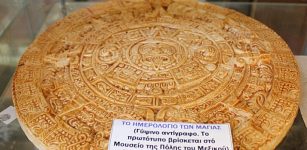 On This Day In History: Mesoamerican Long Count Calendar Begins – On August 11, 3114 B.C
News | Aug 11, 2016
On This Day In History: Mesoamerican Long Count Calendar Begins – On August 11, 3114 B.C
News | Aug 11, 2016 -
 Callacpuma’s Megalithic Stone Circular Plaza Was Constructed Using A Technique Previously Unseen In The Andes
Archaeology | Feb 15, 2024
Callacpuma’s Megalithic Stone Circular Plaza Was Constructed Using A Technique Previously Unseen In The Andes
Archaeology | Feb 15, 2024 -
 Mystery Of Andreas Rill: Was He A Time Traveler, Holy Man Or An Unidentified Prophet In Disguise?
Featured Stories | Oct 25, 2018
Mystery Of Andreas Rill: Was He A Time Traveler, Holy Man Or An Unidentified Prophet In Disguise?
Featured Stories | Oct 25, 2018 -
 300,000-Year-Old Weapons Reveal Early Humans Were Woodworking Master
Archaeology | Jul 19, 2023
300,000-Year-Old Weapons Reveal Early Humans Were Woodworking Master
Archaeology | Jul 19, 2023 -
 Unique Page From Rare Illuminated Manuscript And Thousands Of Treasures Found Under The Floor Of Oxburgh Hall
Archaeology | Aug 18, 2020
Unique Page From Rare Illuminated Manuscript And Thousands Of Treasures Found Under The Floor Of Oxburgh Hall
Archaeology | Aug 18, 2020 -
 Discovery Of Second Viking Site Point Rosee In North America Could Re-Write Ancient History
Archaeology | Apr 1, 2016
Discovery Of Second Viking Site Point Rosee In North America Could Re-Write Ancient History
Archaeology | Apr 1, 2016 -
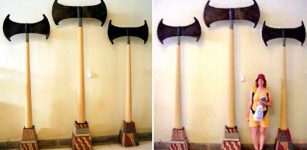 Giant Ancient Minoan Axes Used For Unknown Purposes
Artifacts | Nov 27, 2017
Giant Ancient Minoan Axes Used For Unknown Purposes
Artifacts | Nov 27, 2017 -
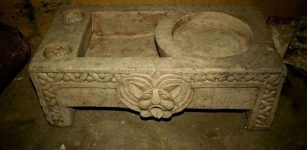 Roman-Era Residence Unearthed In Ancient Capital Of Memphis, Egypt
Archaeology | Sep 27, 2018
Roman-Era Residence Unearthed In Ancient Capital Of Memphis, Egypt
Archaeology | Sep 27, 2018 -
 Archaeological Evidence Amazon Warrior Women Did Exist Found At Nakhchivan Necropolis, Azerbaijan
Archaeology | Mar 27, 2024
Archaeological Evidence Amazon Warrior Women Did Exist Found At Nakhchivan Necropolis, Azerbaijan
Archaeology | Mar 27, 2024 -
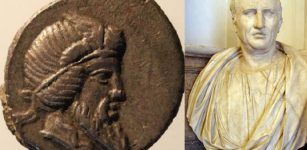 Scientists Solve The Mystery Of Cicero’s Puzzling Words By Analyzing Ancient Roman Coins – Evidence Of Financial Crisis?
Artifacts | Apr 6, 2022
Scientists Solve The Mystery Of Cicero’s Puzzling Words By Analyzing Ancient Roman Coins – Evidence Of Financial Crisis?
Artifacts | Apr 6, 2022 -
 Earliest Evidence For Domestic Yak – Revealed By Ancient DNA And Archaeology
Archaeology | Dec 15, 2023
Earliest Evidence For Domestic Yak – Revealed By Ancient DNA And Archaeology
Archaeology | Dec 15, 2023 -
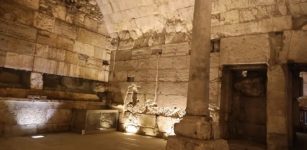 Never-Before-Seen Magnificent 2,000-Year-Old Second Temple Found By Western Wall In Jerusalem Revealed To The Public
Archaeology | Jul 29, 2021
Never-Before-Seen Magnificent 2,000-Year-Old Second Temple Found By Western Wall In Jerusalem Revealed To The Public
Archaeology | Jul 29, 2021 -
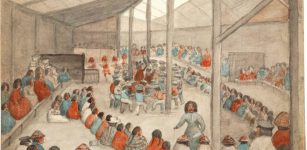 Potlatch: Ancient North American Indian Tradition Of Very Generous Gift Giving
Ancient Traditions And Customs | Sep 12, 2016
Potlatch: Ancient North American Indian Tradition Of Very Generous Gift Giving
Ancient Traditions And Customs | Sep 12, 2016 -
 Mysterious Books From The Unknown And ‘Impossible’ Coincidences
Featured Stories | Dec 30, 2020
Mysterious Books From The Unknown And ‘Impossible’ Coincidences
Featured Stories | Dec 30, 2020 -
 On This Day In History: Johannes Kepler ‘Father Of Modern Astronomy’ Was Born – On Dec 27, 1571
News | Dec 27, 2016
On This Day In History: Johannes Kepler ‘Father Of Modern Astronomy’ Was Born – On Dec 27, 1571
News | Dec 27, 2016 -
 Unexpected Archaeological Discovery May Re-Write English Civil War History
Archaeology | Feb 3, 2023
Unexpected Archaeological Discovery May Re-Write English Civil War History
Archaeology | Feb 3, 2023

